
The new website for Handworks 2020 is now live and kicking. With virtually every maker of fine woodworking tools present as vendors and three adjacent venues and thousands of fellow comrades-in-tools it will be a memorable experience.

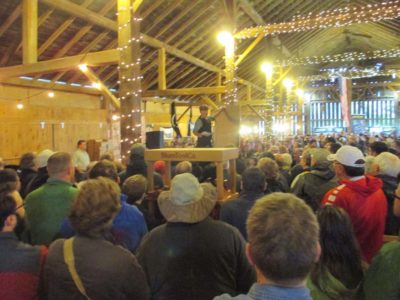
Once again Roy Underhill will be the Saturday morning speaker, always a great crowd pleaser.

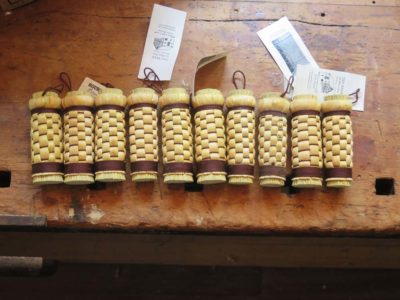
The Barn On White Run (that’s me!) will be present with loads of our polissoirs, waxes, polishes, and other items for your viewing and purchasing pleasure, and I will be giving demonstrations once an hour on using all of these items.
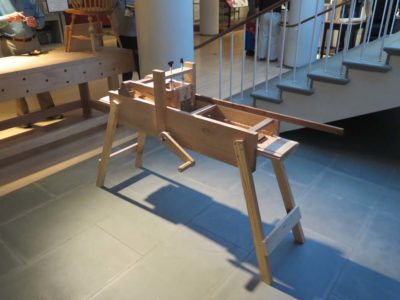
Plus my friend John will be joining me with the latest developments in ripple molding cutters.
As the days grow closer I’ll be blogging frequently bout the event and our participation and experiences there.
Make your plans to join us.
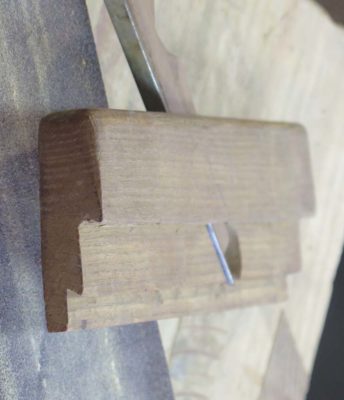
One of the accessories I want to make to accompany my new Japanese tool box is a traditional Japanese planning board, complete with sliding dovetailed “feet.” Since the only dovetail plan I owned was really too small for such a task a new one needed to be made from a derelict 1-inch rabbet plane body.
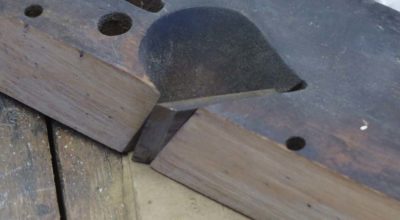
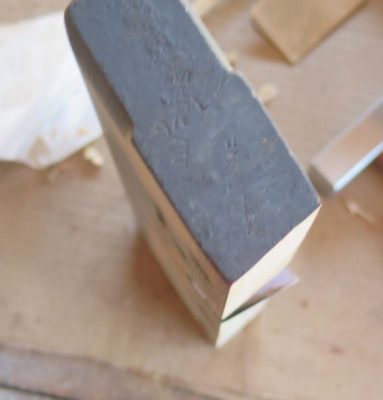
Once the new sole angle was established to match my dovetail gauge it was time to re-make an old iron to serve the intended purpose. Placing the old iron in the body showed how much steel needed to be removed to get the cutting iron and the sole angle to match each other.

I highlighted the iron with marker and shooting a line from the new sole surface against the un-beveled side of the iron with a carbide scribe I now knew how much steel to grind away.
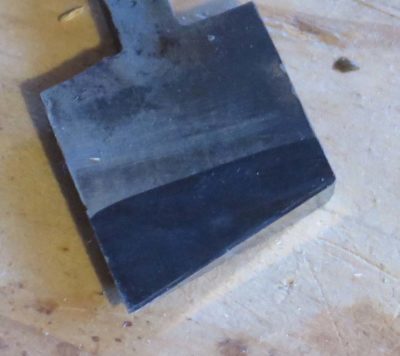
I ground the new line with no bevel to establish that line perfectly.
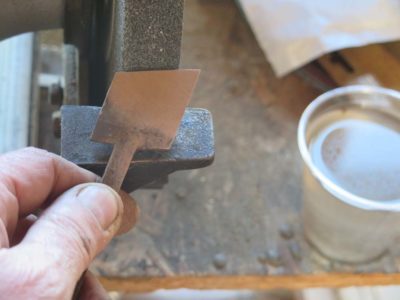

Once that was done I ground away most of the bevel on the power grinder and then finished it off by hand on my granite block and 60 grit abrasive belt.
I moved on to 120 grit and set the iron in place to assess the fit.

Perfectamundo.
Over the last few weeks I’ve been cleaning and organizing/reorganizing my studio, resulting in a more compact spatial scheme and, thus a space for my secret weapon in writing. Yup, I brought down my secret mojo into the studio to psyche me into attacking the completion of A Period Finisher’s Manual with gusto.

Sure, it is a raggedy third generation Eames knock-off (here draped in an old sheet to keep it clean-ish) but it is perhaps the most comfortable chair I’ve ever owned. It would be interesting to know the dimensions of Charles Eames’ physique because the chair fits me as though it had been custom-made for me. It’s sorta like a friend of mine, an armorer and devotee of Sig Sauer pistols, who tells me they fit him like a glove. Indeed S-S are superb precision tools, but the secret sauce to that recipe is that my friend is literally the hand model for the tool — of course he thinks they fit him perfectly, because they were designed to fit his own hand!
Anyway, I have already begun to work on revising the APFM manuscript with vengeance as I am simply tired of having it hanging over my head. Michele has advanced far ahead of me on the Roubo front so I need to get this one done and turn my attention to catching up with her.

I’m hoping this mojo works as well as in the past, when I could work expediently on a manuscript in my chair (even with cats draped allover me while I was revising Roubo 1).
Handworks is now six months away and we are busily preparing for stocking the booth for the onslaught of the thousands of friends old and new bound by the love of traditional hand woodworking tools.
My broom maker has a standing order for dozens of polissoirs to make sure I have plenty of these magical tools for show and sale. Unfortunately(?) I still get orders almost daily so building up the inventory is going slower than I would like. I go to the post office every week with a bag of packages to send.
The broom maker and his wife have finally moved into their dream house he has been building for the past several years, and is having trouble finding the time to set up his own workshop just the way he wants it. I spoke to him this morning (I had actually run out of the Model 296 polissoirs) and just yesterday he was able to begin using the workshop in the new house. I will be providing a complete set of polissoirs as a door prize for Handworks.

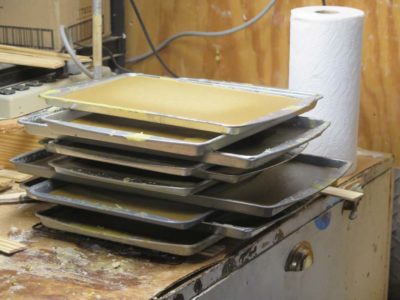
Here on the homestead I have been refining the raw beeswax, known in the apiary/honey/beeswax world as “slum gum”, to provide the purified raw material for Mrs. Barn to make into beeswax bars. There is nothing quite like the beautiful appearance of the amber nectar after the final filtering as I cast it out as molten material in cookie pans.

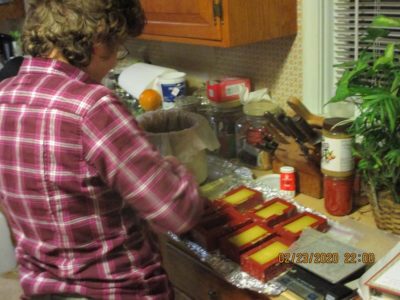
This is a favorite winter activity as it both heats the kitchen a little with her dedicated crockpot going almost 24/7 and imparts the lovely scent of clean molten beeswax throughout the cabin.

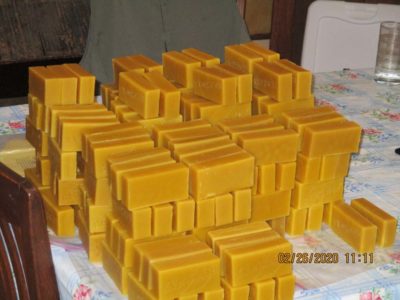

Over the days the pile of finished bars grows and grows, eventually becoming wrapped and placed in their storage boxes.
Meanwhile up in the Waxerie I’ve added casting more shellac wax and Blend 31 bars to my mix of activities. This is a nice punctuation to my other ongoing projects in the shop as it does not need my immediate attention all the time.
I plan to have a full inventory of polissoirs and waxes and stuff and will schedule hourly demonstrations at my booth at Handworks, and will expound on these as things come together.
This is not a “happy” bog post. It might be a little too much “inside baseball” but I thought you should know what is going on and what is coming down the pike. It’s probably bad form to discuss openly the costs of running a business, even a hobby one, and I will give that concern all the consideration I think it deserves. Okay, I’m done with that consideration.
It has been almost a decade since rediscovering the amazing surface prep and finishing tool called the polissoir, or polisher, and connecting up with a local craft broom maker to supply me with them. In that period I have sold and shipped thousands(!) of polissoirs and blocks of beeswax etc., and I hope to continue that success and match it with that of Mel’s Wax in the coming months and years. I delight in sharing the polissoir-and-beeswax’s almost magical qualities with the enthusiasts who have joined me in this trek taking a giant leap backwards in wood finishing. To encourage these tools’ adoption by the woodworking world I have kept the pricing stable almost since the beginning, folding the postage into the purchase price and keeping that unchanged since we went “official” with the Shop function on the website.
Unfortunately the postage increases implemented by the USPO over the past two years have affected me to the degree that, all by itself, postage now consumes over 15% of my gross sales revenue (and nearly 25% of the net), a nearly 100% increase in just the past year. This is so far out of whack I can hardly wrap my head around it, but the unavoidable result is that some of the heavier items in the Store will necessarily increase in price to reflect this grim reality as soon as we can edit the page.
(I am not griping about the post office, they provide excellent service to me and are convenient; I do not realistically have any other parcel carrier option out here in the hinterlands. I usually make the five-minute drive to our one-window post office in town once a week with a canvas tool bag full of parcels to mail. Making a three-hour round trip over the mountains to a parcel depot is not in the cards for me.)
To respond to this new cost reality, after long thought I’ve decided to raise the price of hand refined beeswax by $1 to $14, raising the Blend 31 to $17, and the shellac wax to $21.
All three models of the one-inch polissoirs will remain at their current price since they are so light weight and have apparently — thus far — remained below some postage threshold, but you never know with the USPS.
The large polissoirs, the two-inch woven-sheath and the Model 296 wrapped polissoirs, will be going from $47 to $49, and the two-pound bag of shellac flour will now be $75. Postage for Mel’s Wax is also 50% higher per unit than expected but I will leave that price alone for now as a strategic move.
I’m not apologizing for the increases: even though this is a labor of love for me I simply can’t keep selling and shipping products at the previous prices given the rising costs of postage. That is just a plain and simple fact whether I like it or not. I will be sad if these price increases diminish interest in polissoirs and waxes and such, but as the pundit says, “Facts don’t care about your feelings.”
And, given the recent disruptions in the bee hive health I am doubly glad I bought a lot of raw beeswax for us to hand-process into blocks and polishes just before the colony collapse crisis. I’m hoping that the raw material comes back down in price before I need to buy more at the end of this year, but at the moment the prices for beeswax are about double from when I bought some last.
Stay tuned and wish me luck.
A couple weeks ago while clearing out some stuff from my basement workshop at my daughter’s house, I came across an experiment that is almost forty years old.
In the world of historical fine art one of the premier positions is held by “panel paintings,” or fine paintings composed on a solid wooden panel. Given the age and prominence of these artworks, and the fact that they are unbalanced construction on an inherently unstable base given the presence of a precisely constructed laminar gesso and paint layer on the front side of the solid wood panel, caring for these artworks takes a high place in the preservation hierarchy. Very early in my museum career I found this problem to be a fascinating one, and the data points of my career projects (when I was able to choose the projects to work on, which was most of the time) revealed that it was the quality of the problem that motivated me much of the time, not necessarily the notoriety of the artwork/furniture. That explains my final project, which was the stabilization of a pair of wooden flag poles that encompassed a peculiar approach to addressing the problem of split timbers.
Back to panel paintings.

(Photo by H.L. Stokes via Wikipedia)
To counteract the unbalanced construction on a dynamic foundation, many, perhaps even most, ancient panel paintings have been augmented with a framework applied to the back side to both balance out the construction somewhat, but also to mitigate the tendency of the wood panel to warp. Sometimes these added features, called “cradles,” are elegantly sophisticated. Others are sophisticated and deleterious to the panel as the “floating” spines bind in the “pass through” blocks that are glued to the back side of the panel, inflicting new fractures to the panel along with the distortions as the panel attempts to expand and contract while the bound spines hold it in fixed dimensions, essentially a fixed cross-grain construction. This problematic outcome caused the entire concept to be reexamined beginning about the time I was coming into the museum world and many panel paintings have been de-cradled.
Shortly after hearing a seminar presentation on the topic in 1982 I decided to construct a prototype integrating my understanding of what wood is and how it behaves with some out-of-the-box thinking. Given that many of the old cradles were actually damaging the panel paintings, clearly a different approach was needed. Believe me, the number of alternatives to traditional cradling were legion, and even the last panel paintings conference I attended included several novel and unrelated options.

So I made a full scale model to test some ideas I had rattling around my brain pan. For starters I selected a less than premier piece of wood, it was literally a 2 x 12 resawn, planed, and glued together with hot hide glue into a “panel” approximately 20″ x 30″.

I then fabricated a series of “pass through” blocks with rounded contact points for the floating spines, which were themselves fairly lightweight, with the entire system glued to the back side of the panel.

You can see the construction of the blocks from this one that had been broken somewhere along the line. I applied spray dry Teflon to both the rounded faces of the blocks and the floating spines, hoping that the shape and permanent dry lubrication would prevent the blocks and spines from binding together (Teflon being the slipperiest substance on earth).

After assembling the entire model and showing it to the paintings conservators at the museum (I was working at Winterthur Museum at the time) I set it aside and literally forgot about it for almost four decades. Presumably it has been just sitting in the basement for all those years, responding to changes in the unregulated environment of the space. Over the life of the panel there have been swings in humidity from 100% to maybe 25%, more than enough to impart hysteresis cycles a’plenty.

Much to my delight the assemblage has suffered no ill effects over the decades, so at least the concept proved sound. The original construction is still perfectly flat and there are no instances of long-grain fracture to the wood. Admittedly the panel is balanced in that both faces are raw wood open to the microclimate so there was very little impetus for severe warpage. Still, I would have expected some loss in planarity if there was a flaw in the concept. Nope, still dead flat.
Now that I have reclaimed the experiment I will create a simple paint scheme on the face to mimic the structure of a typical Renaissance panel painting and see how the experimental cradled panel responds over the years. I will leave it sitting out of the way in the barn essentially exposed to the elements except for rain. I’ll check back with it in, say, another 38 years to see how it did. I’ll be 103 then, but I just got back from celebrating my Mom’s 103rd so that might not be too crazy.
If it still looks good then I’ll let someone in the museum world know about it.
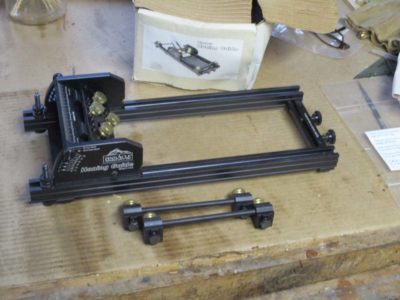
Several months ago I was at a tool flea market and picked up this sharpening jig just because I thought it was neat and the price was right. I use jigs to establish the blade geometry but finish them up freehand, so this might come in handy when rehabbing a damaged edge. Ironically, I made a wood version of this concept and found it useful, so I look forward to giving this unit a tryout.
Stay tuned.
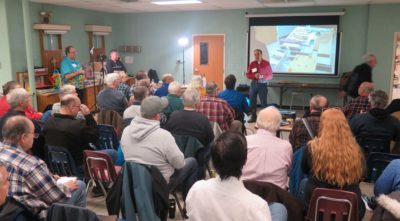
A week ago Saturday I had the great good peasure to spend the day with two DC area woodworking groups, the Manassas Woodworkers and the Washington Woodworking Guild, as they co-hosted a day of Japanese toolification with my friend Wilbur Pan of Giant Cypress fame. The event was at the Manassas group’s space which turned out to be almost perfect for it. I did not take an exact head count but the room was crowded with an estimated 75-100 folks, some of whom came from surrounding areas as distant as Fredericksburg or even the Virginia frontier. Since I have been in that circle of woodworkers for a long time I knew many of the folks in attendance.

Beginning at noon and winding up at supper time, Wilbur walked the audience through the many facets of using Japanese tools in his woodworking, taking pains to refer to those areas where Japanese tools are different from European traditions and where they are similar and complimentary.




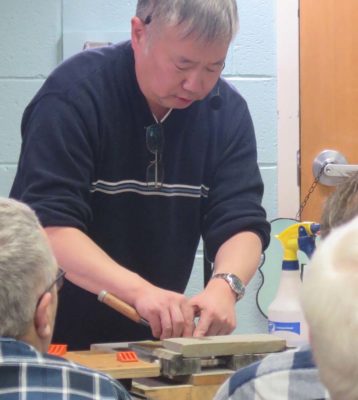
Systematically he reviewed the major tool categories — planes, saws, and chisels — including a full menu of reference information ranging from metallurgy and manufacturing technology to edge geometry to ergonomics and kinesthesiology. My impression was that this was unfamiliar to many in the audience, but there is no way anyone could depart at the end of the day without a deeper understanding of woodworking in general and Japanese woodworking in particular.
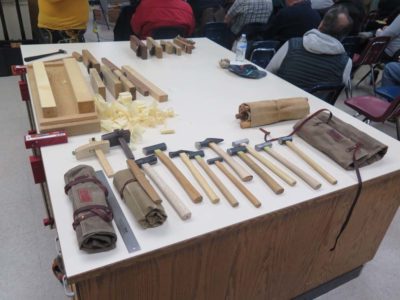
In addition to Wilbur’s tools for the demonstrations, WWG member JayC brought his sizable inventory of tools for show and use. This was one of three or four tables Jay had set up for his tool collection. As we were cleaning up and clearing out afterwards I noticed Jay giving instruction to some of the attendees who wanted to try things out.
I finally got back to my daughter’s home around 9.30, just in time to Skype with other daughter and SIL. It was a darned near perfect day; breakfast with a friend who is a political mechanic, strategerizing about disrupting the malevolent Virginia political establishment, woodworking toolism with friends old and new all day, a delightful dinner with same, and ending with Mrs. Barn and me chatting with the ones we love most dearly.
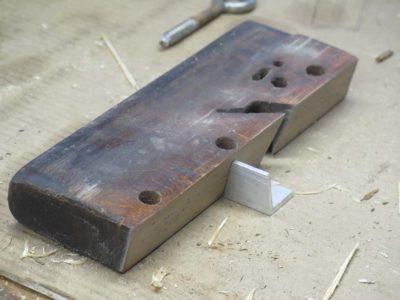
One of the projects soon to be underway in the studio is to make one (or three?) Japanese planning boards complete with sliding dovetail legs and perhaps even a dovetailed planing stop. But first I need a dovetail plane. I had another derelict 1″ dado plane up on the shelf so the raw material was already in hand. This poor thing had the snot beat out of it in ages past, so it was $3 at the PATINA tool event two years ago. If you are anywhere close to northern Maryland on March 14, you should go. The deals are simply amazing.
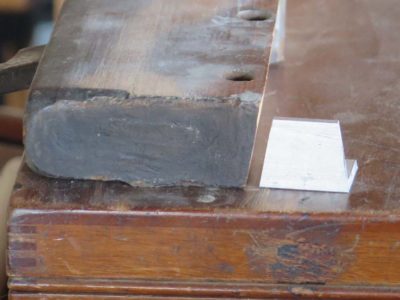
The first step was to decide on the dovetail angle on the sole and cut it on the table saw. It was sooper dooper easy, I just got out my zero-time-zero-cost home made dovetail template from the drawer and set the saw blade to that angle, positioned the fence, and ran it through.
Done.
Follow along on the remaining steps of the journey in the coming posts.
When reviewing the voids in the tool set for the Japanese tool box I decided to make as many of the missing tools as possible. Sure, I can find them easily in the marketplace and for the most part afford them, but if I followed that path I would miss the joy of making the tools. Sometimes I revel more in tool making than woodworking.
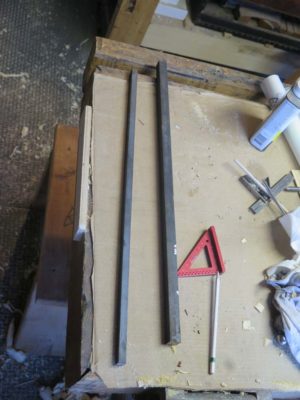
The first and easiest one to make was a small-ish joinery hammer. I’d guess it took about four or five hours over three days to make, and the materials included a 3/4″ x 3/4″ piece of mild steel bar stock from the scrap drawer, a piece of padauk or similar tropical hardwood from the box of wood scraps, and a couple pieces of ivory from my ivory pile. The steel for this hammer came from the larger bar.

I started by cutting a three-inch piece of the steel bar stock from the larger piece of scrap. As is my preference for a lot of similar cutting activities I use a German jeweler’s saw with a #4 blade. While I was at it I sawed the smaller bar for a plane-setting hammer I will make soon.

After the steel bar was cut I dressed all four sides on my granite block with 60 grit sanding belt, I drilled out the two holes that established the eye hole for the handle, then filed them into a nice oval. I originally intended to make the eye hole with the cross feed vise on my drill press, but the vise was so cheezy it could not hold anything steady and I wound up just drilling two holes instead and filing out the oval.

Once I had the eye hole the way I wanted I dressed the chamfers on all the corners, mimicking the character of a Japanese hammer, albeit with slightly “off” proportions since this was perfectly square in cross section. True Japanese hammers are slightly taller than they are wide in cross section. In addition my chamfers are a bit light, I will make them heavier on the next one.

Looking through my pile of wood scraps I picked out a piece similar to what I used for a plane adjusting hammer some years ago, it actually might have been from the same piece. I like the handles on such hammers to be long and slender.
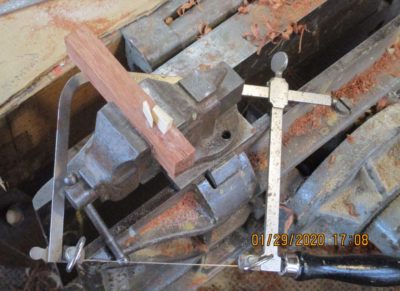
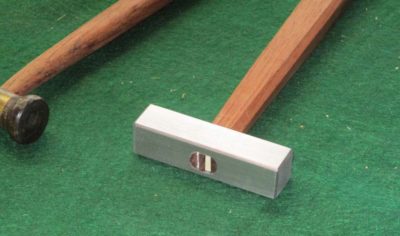
With the handle made and fitted to the hammer head I got out some ivory and cut a pair of wedges, which I drove into the pre-cut kerfs in the end of the handle. A little smoothing out and the tool was done.

The only other thing I might do to this little beauty would be to blue the sides to an almost-black appearance, and do a little engraving through the bluing. That would look nice, I think. As is it’s a very nice addition to the Japanese tool box and feels great in my hand.


















































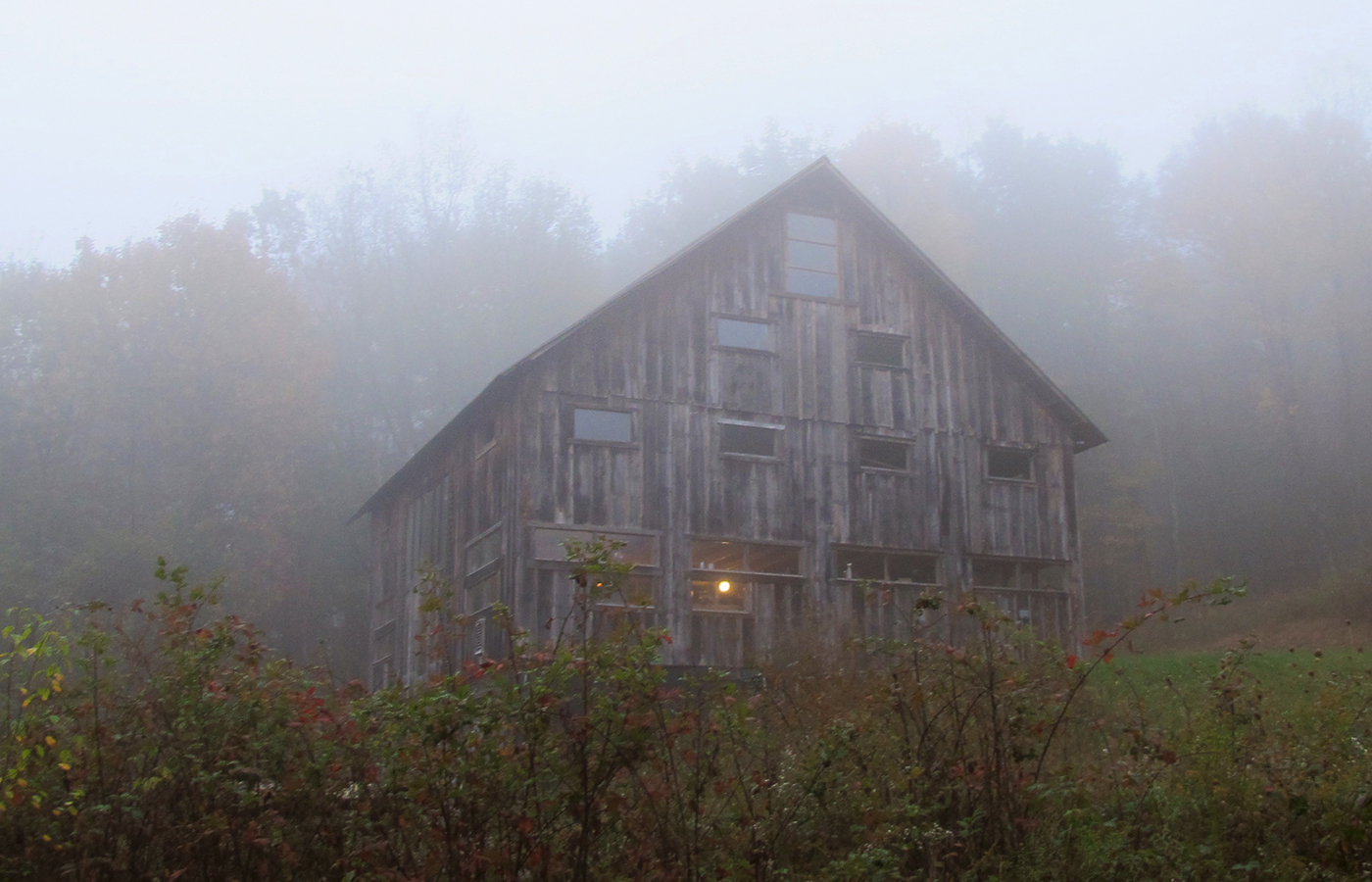
Recent Comments